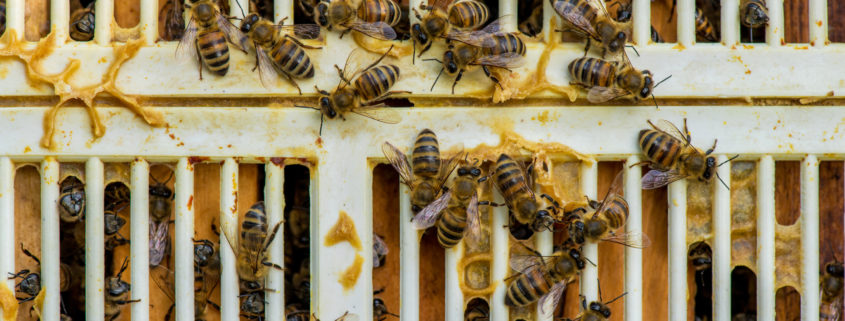Sage Honey
One of the more delightful times of the year for a beekeeper is during the heart of spring. The daylight is growing longer each day, and the bees have plenty of foraging work to attend to. This is the time of year when so many flowers are blooming that you begin to wonder how the bees can even figure out where to go when they leave the hive. With so many flowers to choose from, where do they begin?
Here at Wildflower Meadows, it seems to us that in times like this, wild sage blossoms are the bees’ favorites. We know this by two tell-tale signs. First, about mid-April, the incoming nectar switches from the deep reddish brown color of avocado nectar to the light and almost clear color of wild sage nectar. Second, and more tellingly, we begin seeing foraging bees returning to the hive with purple heads!
Here in Southern California, the purple heads can only come from one source, black button sage. Black button sage, also known as black sage or salvia mellifera, is a coastal chaparral plant that blooms with delicate purple blossoms primarily in April and May. Although its flowers are purple, the plant is nevertheless called black sage. This is because later in the season the flowers dry up and the flower pods turn to black caps, or black “buttons”, giving it its well-known name of black button sage.
The sage nectar that the bees enjoy so much resides at the base of a purple tube. Eager bees dive right into this tube, and in the process, get a face full of purple pollen dust. This can easily be noticed by an observant beekeeper watching the returning foragers with purple faces. Their faces don’t stay purple for long, however. Once inside the hive, the other bees clean the faces of their sisters so that by the time the foraging bees exit for their next flight, they are wiped clean and ready for a new round.
Sage honey is known for its very light, almost transparent color and its well-renowned ability to resist crystallizing. It is one the most prized California honeys, with a delicate flavor that has a distinct “bubble gum” flavor – delicious through and through!












